
EURASIP Journal on Wireless Communications and Networking
Scope & Guideline
Driving Progress in Communication and Networking
Introduction
Aims and Scopes
- Wireless Communication Technologies:
The journal emphasizes the exploration and development of new wireless communication technologies, including but not limited to MIMO, OFDM, and cognitive radio systems, focusing on enhancing capacity, coverage, and energy efficiency. - Networking Protocols and Architectures:
It covers advancements in networking protocols and architectures for various wireless systems, including mobile edge computing, IoT networks, and heterogeneous networks, aiming to improve performance, reliability, and scalability. - Signal Processing Techniques:
Research on signal processing methods, such as adaptive filtering, channel estimation, and interference mitigation, is a core area, focusing on improving the robustness and efficiency of wireless communication systems. - Machine Learning Applications:
The journal explores the integration of machine learning and artificial intelligence techniques in wireless communications and networking, including applications in resource allocation, anomaly detection, and traffic management. - Energy Efficiency and Sustainability:
Research focused on energy-efficient designs and sustainable practices in wireless networks, including green communication technologies, resource management strategies, and low-power communication protocols.
Trending and Emerging
- Integration of AI and Machine Learning:
There is a growing trend towards utilizing AI and machine learning techniques to optimize various aspects of wireless communication systems, including resource allocation, network management, and intrusion detection. - Reconfigurable Intelligent Surfaces (RIS):
Research on RIS has gained momentum, focusing on how these surfaces can enhance wireless communication performance by improving signal quality and energy efficiency. - 6G and Beyond Technologies:
With the anticipation of 6G, there is an increasing focus on technologies that support ultra-reliable low-latency communications, massive machine-type communications, and integrated sensing and communication systems. - Energy Harvesting and Green Communications:
Emerging research themes emphasize energy harvesting technologies and sustainable practices in wireless networks, addressing the need for energy-efficient designs in the face of growing environmental concerns. - Underwater and Aerial Communication Systems:
New platforms for communication, such as underwater acoustic networks and drone communication systems, are becoming prominent, reflecting the diversification of wireless communication applications.
Declining or Waning
- Traditional Wireless Networking Models:
There has been a noticeable decline in studies focused on traditional wireless networking models, as researchers increasingly pivot towards more complex and dynamic environments, such as those enabled by AI and machine learning. - Legacy Communication Protocols:
Research on older generation communication protocols, such as those specific to 2G and 3G technologies, has decreased significantly, reflecting the industry's shift towards 5G and beyond. - Basic Antenna Design Studies:
While antenna design remains important, the focus has shifted from basic antenna designs to more complex, application-specific, and integrated antenna systems that are optimized for specific use cases in advanced wireless communication.
Similar Journals

Electronics
Catalyzing Collaboration in Electronics EngineeringElectronics, published by MDPI since 2012, stands as a pivotal open-access journal that caters to a wide spectrum of disciplines within the electrical and electronic engineering domain. With a strong commitment to disseminating innovative research, this journal has garnered notable recognition, achieving a Q2 ranking in multiple pertinent categories, including Computer Networks and Communications, Control and Systems Engineering, and Signal Processing. Its editorial standards and open-access format enhance the visibility and accessibility of high-quality research, making critical advancements in technology available to a global audience. Located in Switzerland, the journal is positioned to foster international collaboration and dialogue among researchers, professionals, and students dedicated to exploring the evolving landscape of electronics and its applications. With an E-ISSN of 2079-9292, the journal is meticulously indexed in reputable databases like Scopus, further solidifying its relevance and influence in the engineering community.

International Journal of Wireless Information Networks
Pioneering Research in Wireless Information NetworksInternational Journal of Wireless Information Networks, published by Springer, is a premier outlet for scholarly research in the fields of wireless information and communication technologies. With an ISSN of 1068-9605 and an E-ISSN of 1572-8129, this journal has established itself as a significant contributor to the literature since its inception in 1994. As evaluated in 2023, it holds a commendable Q2 ranking in several categories, including Computer Networks and Communications, Electrical and Electronic Engineering, and Hardware and Architecture, reflecting its robust impact and relevance within the academic community. Furthermore, it is ranked within the top quartiles in Scopus, placing it in the 76th, 74th, and 73rd percentiles in relevant fields. While the journal does not currently offer open access options, it remains an essential resource for researchers, professionals, and students dedicated to advancing knowledge and innovation within wireless information networks. The authoritative content published within these pages positions the journal at the forefront of ongoing technological developments, making significant contributions to the field until at least 2024.

IEEE Open Journal of the Communications Society
Advancing the Frontiers of Communication ResearchWelcome to the IEEE Open Journal of the Communications Society, a premier open-access publication dedicated to advancing the fields of computer networks and communications. Launched in 2020 by the esteemed IEEE-Institute of Electrical and Electronics Engineers, this journal operates under a commitment to disseminate high-quality, peer-reviewed research that fosters innovation and collaboration within the global communications community. With an impressive impact factor and currently positioned in the Q1 category of Time's rankings for Computer Networks and Communications (2023), the journal ranks 21st out of 395 in its field, placing it within the top 6% globally. It serves as a vital forum for researchers, professionals, and students, providing them with immediate access to pioneering studies and emerging trends. Being fully open access, all published articles are freely available to enhance the reach and impact of your research. Join us in exploring transformative ideas and technologies that shape the future of communications.
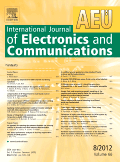
AEU-INTERNATIONAL JOURNAL OF ELECTRONICS AND COMMUNICATIONS
Exploring the Convergence of Electronics and Communication.AEU - International Journal of Electronics and Communications, published by Elsevier GmbH, is a leading peer-reviewed journal that has become an essential resource for scholars and professionals in the fields of electronic communications and electrical engineering. With an impressive impact factor reflective of its rigorous scholarship, the journal holds a Q2 ranking in the category of Electrical and Electronic Engineering, placing it in the top tier of its field. This journal primarily focuses on publishing innovative research, reviews, and advancements that facilitate the convergence of electronics and communication technologies. As it strides through various converged years, from 2001 to 2024, AEU delivers critical insights and cutting-edge developments to a global audience, encouraging collaboration among researchers and practitioners. With its accessible platform, researchers are invited to contribute their findings and to stay abreast of the latest trends and discoveries in this dynamic field, strengthening the journal’s vital role in shaping the future of electronics and communications.
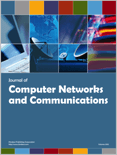
Journal of Computer Networks and Communications
Exploring the Future of Communications TechnologyThe Journal of Computer Networks and Communications is a premier open-access journal published by HINDAWI LTD, dedicated to advancing the field of computer networks and communications. With an ISSN of 2090-7141 and an E-ISSN of 2090-715X, this journal has been accessible to researchers since its inception in 2011, promoting widespread dissemination of knowledge in this rapidly evolving discipline. Based in Egypt, the journal's editorial standards are upheld through a rigorous peer-review process, contributing to its strong academic reputation. As of 2023, it holds a commendable Q2 ranking in Computer Networks and Communications and a Q3 ranking in Information Systems within its category quartiles. According to Scopus rankings, it occupies the 141st and 143rd positions in its respective fields, showcasing its relevance and influence in the academic community. The journal's mission is to publish high-quality research that addresses contemporary challenges in networking technologies and systems, making it an essential resource for researchers, professionals, and students seeking to innovate and excel in these fields.

WIRELESS NETWORKS
Driving Excellence in Wireless Research and DevelopmentWIRELESS NETWORKS is a prestigious journal published by Springer, focusing on cutting-edge research in the domains of wireless communication, computer networks, and information systems. Established in 1995 and set to converge its influential contributions until 2024, this journal has rapidly ascended to a Q2 category ranking in the fields of Computer Networks and Communications, Electrical and Electronic Engineering, and Information Systems, reflecting its significant role in advancing knowledge and innovation—ranked 75th, 151st, and 84th respectively in their fields by Scopus. Researchers and professionals alike value its contribution to the discourse on wireless technologies, making it a vital resource for professionals and students eager to stay abreast of the latest trends and findings. Although it does not offer open access, the insights gleaned from its articles are invaluable for tackling the challenges of modern communications and ensuring the efficient use of wireless networks.

Jordan Journal of Electrical Engineering
Unleashing Potential through Open Access ResearchJordan Journal of Electrical Engineering, published by TAFILA TECHNICAL UNIVERSITY (TTU) in Jordan, serves as a critical platform for disseminating groundbreaking research in the fields of electrical engineering, energy systems, and related disciplines. With an ISSN of 2409-9600 and an E-ISSN of 2409-9619, the journal is committed to promoting advancements in energy engineering, biomedical applications, control systems, and signal processing among others. Despite its recent establishment in 2023, it has been indexed in multiple categories within Scopus, receiving rankings that reflect its emerging role in the academic community. Researchers and professionals are encouraged to contribute and access cutting-edge articles through open access options, ensuring that knowledge is readily available to all interested parties. As the journal continues to grow, it aims to bridge gaps in knowledge and stimulate dialogue, thereby supporting innovation and practical applications in the engineering sector.
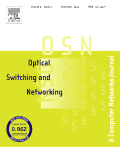
Optical Switching and Networking
Fostering Collaboration in Optical TechnologiesOptical Switching and Networking is a prestigious academic journal published by ELSEVIER, focusing on cutting-edge research and developments in the field of optical communications and networking. With an impressive impact factor and quartile ranking, this journal is recognized as a vital resource for professionals and researchers in Computer Networks and Communications and Electrical and Electronic Engineering, positioned in the Q2 category according to the latest metrics. Aiming to foster innovation and knowledge exchange among scholars, the journal covers a diverse range of topics, from optical switching mechanisms to the latest advancements in network architecture. Researchers benefiting from its accessible content will find it an invaluable platform for advancing their work and engaging with a global community of experts. For those seeking to enhance their understanding and contribute to the academic discourse in these rapidly evolving fields, Optical Switching and Networking serves as an essential conduit for high-quality research and ideas.
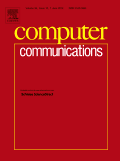
COMPUTER COMMUNICATIONS
Shaping Tomorrow's Communication TechnologiesCOMPUTER COMMUNICATIONS is a premier journal published by Elsevier, covering cutting-edge research in the field of computer networks and communications. With an impressive 2023 Scopus ranking placing it in the 95th percentile and classified as Q1 in its category, this journal embodies the forefront of technological advancement and scholarly excellence. Since its inception in 1978 and poised to continue until 2024, COMPUTER COMMUNICATIONS serves as an essential platform for disseminating high-impact research that advances our understanding of computer networking protocols, architectures, and applications. Although it is not an open-access publication, the journal provides various access options to ensure that its findings are widely circulated among researchers, professionals, and students. Through rigorous peer review and a commitment to fostering innovation, COMPUTER COMMUNICATIONS plays a vital role in shaping the future of communication technologies.
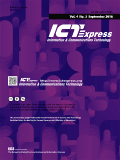
ICT Express
Fostering Global Collaboration in Computational SciencesICT Express is a leading open-access journal published by Elsevier that has established itself at the forefront of the fields of Artificial Intelligence, Computer Networks and Communications, Hardware and Architecture, Information Systems, and Software. Since its inception in 2015, this South Korea-based journal has provided a vital platform for disseminating innovative research and practical applications across these rapidly evolving domains. With an impressive impact factor and consistently high Scopus rankings—placing it in the top quartiles of its categories—it attracts contributions from both seasoned experts and emerging scholars. Current access options ensure that groundbreaking findings are readily available to a global audience, thus fostering collaboration and advancement in technology and computational sciences. As ICT continues to reshape various industries, the significance of research published in ICT Express is crucial for staying ahead in the digital landscape.